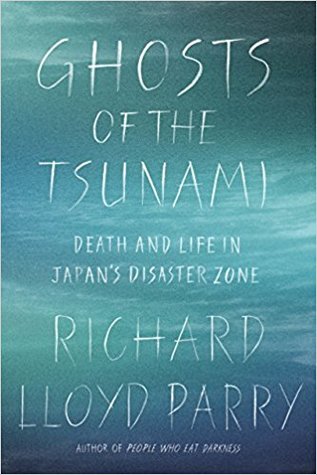This is another NetGalley book, one that I wished for and was granted to me. I’m thankful that I got to read this because it’s a heartbreaking account of the effect of the March 11th tsunami. Instead of trying to show all the destruction, Ghosts of the Tsunami focuses on Okawa Elementary School, where a series of heartbreakingly wrong decisions led to the deaths of 74 out 78 students and 10 out of 11 teachers.
Desperate for some answers and frustrated by the actions of the school and the principal, a group of parents took the brave step of bringing things to court. But this is not a legal drama. The book takes an intimate look at the lives of all those involved by talking to survivors and relatives of victims to build an account of what happened and what happened after, including the court case.
There are many heartbreaking moments in this book, such as a grandfather unable to recognise the body of his granddaughter, whom he lifted out of the mid, because of the state she was in.
Or the words of this mother:
“We used to think that we were bringing up our children,” said Sayomi Shinto. “But then we discovered that it was we, the parents, who were brought up by them. We thought that the children were the weakest among us, and that we protected them. But they were the keystone. All the other pieces depended on them. When they were taken away, we realised this for the first time. We thought that we were looking after them. But it was the children who supported us.”
And by making sure the book isn’t too narrowly focused on the court case, instead following the lives of the parents and one of the surviving children, Richard Lloyd Parry managed to convey how the community of Tohoku reacted. For example, the way the community divided into two regarding what to do with the school – preserve it or not – reflected how they chose to deal with grief; whether they wanted to face it and talk about it or to hide it away.
There was only one moment in the book that made me double take. Someone was talking about the size of the tsunami and the words “twenty feet” was quoted. I suppose that this is to make things easier for Americans to understand, despite the fact that all but three countries in the world use the metric system, but I didn’t like it. If you’re quoting someone, I would prefer that the translation be as accurate as possible, and yes, meters to feet is a small change but if I doubt the small things, then I might end up doubting the important things too.
Overall, though, this was a fantastic book and one of the most powerful things that I’ve read this year. If you’re going to read one book on the 3/11 Tsunami, this is it. By the way, if you want a sneak pic, the Guardian has a good excerpt that you should read.
Disclaimer: I got a free copy of this book from the publisher via NetGalley in exchange for a free and honest review.

